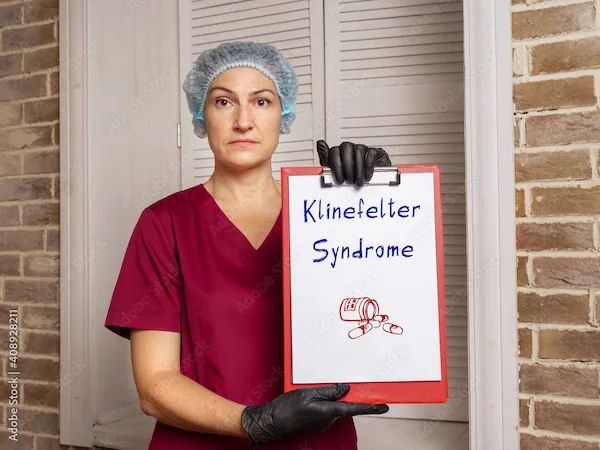Understanding Edwards Syndrome: A Comprehensive Guide for Patients and Families
Concerned about Edwards Syndrome (Trisomy 18)? This resource explains the condition, its characteristics, how it's diagnosed, and support resources for families.

Written by Dr.Sonia Bhatt
Last updated on 3rd Jul, 2025

Edwards Syndrome, also known as Trisomy 18, is a rare but serious genetic condition that affects the development of infants. It occurs when a baby is born with an extra copy of chromosome 18, which can lead to various physical and developmental challenges. This condition is named after Dr. John H. Edwards, who first described it in 1960. Though Edwards Syndrome is rare, it is important for both patients and their families to understand what it entails, the signs to look for, the challenges that may arise, and the available support systems.
What is Edwards Syndrome?
Edwards Syndrome is a genetic disorder caused by the presence of an extra copy of chromosome 18 in a baby’s cells. Typically, humans have 46 chromosomes in total—23 pairs, one from each parent. However, in Edwards Syndrome, an additional (third) chromosome 18 interferes with normal development. This extra chromosome can cause severe physical and mental health challenges.
Edwards Syndrome is typically diagnosed during pregnancy through prenatal screening, such as blood tests or amniocentesis. It can also be diagnosed after birth through genetic testing.
What Causes Edwards Syndrome?
Edwards Syndrome occurs due to a random error in cell division called nondisjunction, where a chromosome fails to separate properly during the formation of an egg or sperm cell. As a result, the fertilised egg ends up with an extra chromosome. This happens in the early stages of pregnancy and affects every cell in the baby’s body.
In most cases, the extra chromosome comes from the mother’s egg, although it can also come from the father’s sperm. The specific cause of the nondisjunction is not always clear, but it is known that the risk increases with maternal age—especially in women over 35 years old.
Key Symptoms and Features of Edwards Syndrome
Babies with Edwards Syndrome often exhibit a range of physical and developmental challenges. These include:
Severe developmental delays: Children with Edwards Syndrome experience significant delays in reaching developmental milestones, such as rolling over, sitting up, or walking.
Low birth weight and small head size: Affected infants are often born underweight and may have a small head (microcephaly).
Heart defects: Many babies with Edwards Syndrome have congenital heart defects, which can affect normal circulation and oxygenation.
Facial abnormalities: These can include a small jaw (micrognathia), low-set ears, and a cleft palate or lip.
Hand and limb abnormalities: Common features include clenched fists, overlapping fingers, and club feet.
Low muscle tone (hypotonia): Babies may have weak muscles, which makes them appear floppy and less responsive.
In addition to these features, many babies with Edwards Syndrome also face serious organ and systemic problems. These complications can affect their ability to breathe, feed, and maintain normal body functions.
Diagnosis of Edwards Syndrome
Prenatal testing is the most common method of diagnosing Edwards Syndrome. Several screening and diagnostic tests are available to assess the likelihood of the condition:
First-trimester screening: This includes a blood test and an ultrasound to measure the nuchal translucency (a fluid-filled space at the back of the baby’s neck). If abnormalities are detected, it may indicate a higher risk of Edwards Syndrome.
Amniocentesis: This test involves taking a small sample of amniotic fluid from around the baby to test for genetic conditions, including Edwards Syndrome. It provides a definitive diagnosis.
Chorionic villus sampling (CVS): Similar to amniocentesis, CVS involves taking a small tissue sample from the placenta to check for chromosomal abnormalities.
In some cases, Edwards Syndrome is diagnosed after birth through a physical examination and genetic testing (karyotyping).
Prognosis and Life Expectancy
The prognosis for children with Edwards Syndrome is generally poor, with many babies dying within the first few weeks or months of life. Research indicates that approximately 50-60% of babies with Edwards Syndrome die before birth or during delivery. Those who survive beyond the first year of life often face severe health complications and are unlikely to live beyond early childhood.
Some children with milder forms of the condition may live into their teenage years, but they will need a lot of care and support throughout their lives. How long they live can depend on how severe their condition is and whether they have other health issues.
Treatment and Management
Unfortunately, there is no cure for Edwards Syndrome. Treatment is primarily supportive and aims to improve the quality of life for affected infants and children. The following strategies may be employed:
Medical care: Babies with heart defects, feeding difficulties, or respiratory issues may require surgery or other medical interventions. Early diagnosis and intervention can improve the chances of managing these conditions.
Physiotherapy: Physiotherapy can help address muscle weakness and delays in motor development.
Speech therapy: Some children benefit from speech therapy for helping with communication and feeding.
Palliative care: In cases where life expectancy is very limited, palliative care can help manage symptoms and improve comfort.
Parents and caregivers should work closely with a healthcare team, including paediatricians, geneticists, and specialists, to manage the condition and provide appropriate care.
Coping with the Emotional and Practical Challenges
Discovering that a child has Edwards Syndrome can be emotionally distressing for parents and families. It's important to seek emotional support during this challenging time. Here are some ways to cope:
Counselling and Support Groups: Talking to a professional counsellor or joining a support group is important for emotional relief and helps families connect with others going through similar experiences.
Planning for Medical Care: Work with healthcare professionals to understand the child’s medical needs and make informed decisions about treatment and interventions.
Educating and Preparing Family Members: Families should educate themselves about the condition and prepare siblings, relatives, and friends to understand the child’s needs.
Living with Edwards Syndrome: Long-term Care and Support
For families who have a child with Edwards Syndrome, long-term care can be demanding but also rewarding. Long-term care includes the following parameters:
Regular medical check-ups: Children with Edwards Syndrome may need frequent visits to specialists to monitor and address various health problems.
Supportive therapies: Occupational, physical, and speech therapies can help children develop skills and improve their quality of life.
Assistance with daily activities: Many children with Edwards Syndrome will need assistance with feeding, dressing, and other daily activities due to developmental delays and physical disabilities.
Parents and caregivers should remember that each child with Edwards Syndrome is unique, and their needs and abilities will differ. Building a strong support network and accessing resources will be vital in ensuring the child receives the best possible care.
Conclusion
Edwards Syndrome is a rare and complex genetic disorder with a significant impact on affected infants and their families. Though the condition comes with serious challenges, medical interventions and supportive care can improve the quality of life for children with the syndrome. Emotional support, early diagnosis, and intervention are crucial in managing the physical and developmental challenges that arise. Suppose you or a loved one has been affected by Edwards Syndrome. In that case, it’s important to work closely with healthcare providers, seek emotional and practical support, and stay informed about potential treatment options. Families can navigate this difficult journey with proper care and resources and ensure their child’s well-being and comfort.
Consult Top Neurologists
Consult Top Neurologists

Dr. Uddalak Chakraborty
Neurologist
8 Years • MBBS, MD(GENL.MED.),DM(NEUROLOGY)
Kolkata
MCR SUPER SPECIALITY POLY CLINIC & PATHOLOGY, Kolkata
(25+ Patients)

Dr. Ganeshgouda Majigoudra
Neurologist
10 Years • MBBS, MD ( GENERAL MEDICINE) DM (NEUROLOGY)
Bengaluru
Apollo Clinic, JP nagar, Bengaluru
Dr. Lakshaman K
Neurologist
19 Years • MBBS,MS General Medicine,MCH Neurosurgery
Bengaluru
R V speciality Clinic, Bengaluru

Dr. Aditendraditya Singh Bhati
Neurosurgeon
18 Years • MBBS(2004), DNB Neurosurgery(2014); MNAMS; Fellow Neuroendoscopy
Delhi
Apollo Hospitals Indraprastha, Delhi
(100+ Patients)

Dr. Uddalak Chakraborty
Neurologist
8 Years • MBBS,MD(GENL. MED.),DM(NEUROLOGY)
Kolkata
VDC Clinic, Kolkata




